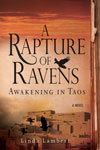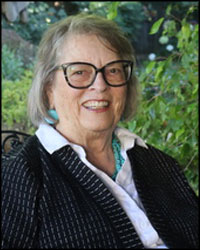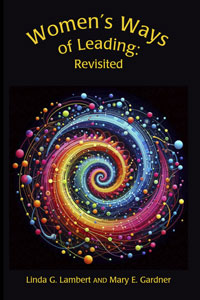Fiction
« Older Entries Newer Entries »Press Release: A Rapture of Ravens
Saturday, March 21st, 2015
 a new historical novel filled with native mysticism, the romance of the high desert, literary intrigue, and echoes of the Egyptian revolution
a new historical novel filled with native mysticism, the romance of the high desert, literary intrigue, and echoes of the Egyptian revolution
The third in The Justine Trilogy, this sizzling novel is preceded by the award-winning The Cairo Codex and The Italian Letters. Anthropologist Justine Jenner travels to Taos in search of her great-grandfather, D. H. Lawrence, and her own identity. In Taos, she finds the peoples of the pueblo, archaeologists, Lawrence aficionados, and followers of Kateri, the Indian saint, who draw her into the riveting blend of cultures, including the pursuit of the migration patterns of the peoples of Mesa Verde.
Driven to understand the spirituality Lawrence found at his ranch on Lobo Mountain, Justine uncovers documents and letters in the subterranean tunnels and wild terrain of New Mexico that explain his mysterious journey. Her Egyptian lover joins her at Christmas, 2010, proposes, then returns to Cairo to lead the revolution. After witnessing the beating of Amir in Tahrir Square on television, Justine runs from this truth and is imprisoned by a massive avalanche. The stunning finale engages Justine in a life and death struggle with nature and herself.
The Justine Trilogy follows the quest of Justine into Egypt, Italy and Taos. Exploring bold themes of dominant human desires, fundamentalism, sexual awakening, feminism, and the pressures that lead to revolution, these novels form a spiral of interlocking mysteries and experiences, propelled by Justine’s increasing maturity and proactivity, her insatiable curiosity, and her sensitivities as an anthropologist.
The world release of A Rapture of Ravens: Awakening in Taos will be held June 12, 2015, at the Mabel Dodge Luhan house in Taos, New Mexico.
Tags: Press release
Posted in A Rapture of Ravens, Fiction, Taos, The Justine Trilogy | No Comments » | Leave a Comment



 Mary Gardner, a retired educator, has dedicated much of her life to learning and leading. She was a teacher, administrator, researcher, and continues to be a writer, mentor and consultant. She and Linda are known for their original work in reframing leadership. Their latest book is Women’s Ways of Leading: Revisited.
Mary Gardner, a retired educator, has dedicated much of her life to learning and leading. She was a teacher, administrator, researcher, and continues to be a writer, mentor and consultant. She and Linda are known for their original work in reframing leadership. Their latest book is Women’s Ways of Leading: Revisited.